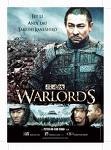Drama Home
Probably one of the most popular forms of literature is the drama. When a play is given on a stage, the viewer is required to see in his/her mind’s eye most of the props and background. The viewer is always given the key--human emotions--through the actors. When we watch a film, we are simply being supplied the visual props and background. The human emotions are still to be shown through the actors. Ironically, the props supplied often interfere with our way of understanding the theme and or message.
Many films fall apart because the actors do not come across displaying genuine emotions. We have all seen films where we laughed when we were supposed to be feeling sorrow.

We do not rely on the props and background; we rely on the actors to tell the story. In some modern films, the special effects actually interfer with the “suspension of disbelief” that is needed. When you and your friends feel like a movie was “stupid,” quite often, the problem is the inability of the actor(s) to make you believe the emotions, actions, or results. Another common problem is the writing. If the writer(s) develop a situation or result that is too contrived, we again feel like the movie is poor. Note, I said TOO contrived--we love fantasy situations that talk about a truth. The fantasy helps set up a situation where the truth is highlighted. The writer’s take on a problem is clearly explained.
If you strip away the props, the actors, and the lighting you are left with an interaction between you and the words on the page. You must bring to the words the scene, the emotions, and the decision of whether the situation is so contrived as to render any theme, message, or even enjoyability as null and void.

![]()

I am going to give you a short set of notes --these concepts will show up on the drama quiz.
Keys--
Situation-when does the author let the reader/viewer in on the subject or action? Do we have to piece together the problem based on what the characters are saying? Do we move from beginning to ending in chronological order or do we deal with flashbacks? Does the author tell us the problem, or do we get hints about the skeletons in the closet? The younger the intended audience the more straight forward the author’s presentation. Adult audiences with our greater understanding of how the world works, our knowledge that

today’s issues are based on previous events, and our knowledge of world history will enjoy presentations that are more challenging and more thought provoking. When thinking about the situation of the play--use your historical, social, and psychological knowledge tools. The author is usually talking about complex situations that incorporate all three of those elements.
Character-Plays for younger audiences have good and bad characters--clear and simple. Life and people, as adults know them, are not that clear and simple. We have to listen to what the characters say and do not say, to whom they say it, and what they actually do. Sound like real life? Not quite. In a play, the author must make the characters reveal themselves, or at least that portion of themselves that is critical for the story line. The author will use conversations with friends, conversations with non-friends, soliloquies, and actions to reveal character. As you know, what a person says may not match what a person does or thinks.
Dialogue-if we cannot take at face value what a person says, then what do we draw from dialogue? The same things we draw from real life dialogues-impressions, clear understanding of a character’s beliefs even if those beliefs are not what the character expressed, and the ability to decide how we feel about the character. In order to gain these impressions, we have to pay attention to the directions given by the author and try reading lines in different ways.

IGNORED BUT CRITICAL KEY GROUP--Plot, internal conflict, climax and resolution, subplots-I have grouped these pieces together because they form a whole. We all know the basic definition of a plot --a series of actions leading to a climax and resolution. Well, most modern plays (other than comedies and date movies) do not smoothly follow the standard pattern. There are subplots (just like a novel), there are conflicts between characters that have nothing to do with the major conflict the play focuses on, and many times there are no neat tidy resolutions. Most modern plays mirror the way life actually is---not the fake life of ‘realty TV.’ It is also possible in some plays to miss the climax. The reason is simple, what is the climax of most modern situations. Is the climax defined by each character, or defined as a consensus, or is there no climax? I think all three answers are true for various plays and situations.
The following page will be focused on the plays we are reading this semester. I have the assignment explained on that same page, but I will be happy to discuss the assignment or answer emails.
